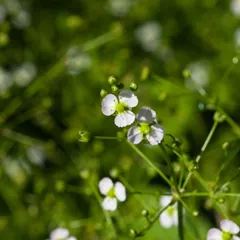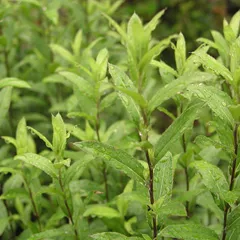Damp-Cold
The information provided here is not a replacement for a doctor. You shouldn't use it for the purpose of self-diagnosing or self-medicating but rather so you can have a more informed discussion with a professional TCM practitioner.
At a glance
Preliminary reading: What is a pattern?
Key attributes
Chinese name: 寒湿 Pinyin name: Hán shī
Pattern nature: Full
Pattern hierarchy: Specific pattern under Cold
Common combinations: Wind-Cold-Damp invading with Qi Deficiency
Causes
Precursor patterns: Spleen Qi Deficiency
Common causes: 1. Diet, 2. External Cold and Damp
Diagnosis
Common symptoms: Sneezing Diarrhea Runny nose Cold limbs Joints pain and six other symptoms
Pulse type(s): Deep (Chen), Slippery (Hua), Slow (Chi), Soggy (Ru)
Tongue description: White coating
Treatment
Treatment principle: Clear internal Cold Damp, strengthen the Spleen and the Stomach
Common formulas: Wei Ling Tang
Pathology
Spleen Qi or Yang Deficiency is often the precursor of general Dampness in the body. It is because the Spleen is responsible for water or any Body Fluids transportation and transformation and its disfunction can lead to the formation of Dampness, which can eventually become Phlegm.
If there is also Exterior Dampness and Cold invasion, it can combine with the internal Dampness and worsen the condition. It can eventually become Interior Cold-Damp.
If the Damp-Cold invades the Channels and joints, it causes Painful Obstruction Syndrome with symptoms like joints pain, swollen or stiffness. Notopterygium roots is recommended for upper body pain, while Pubescent angelica roots is the best for lower body.
When the Damp-Cold settles down in Organs, it is better to use drying and warming herbs that can enter these Organs, such as Tangerine peel, Korean mint, Crow-dipper rhizome or Houpu Magnolia bark.
Causes
Precursor patterns: Damp-Cold can derive from Spleen Qi Deficiency
Diet : Overconsumption of cold and raw foods can cause this pattern.
External Cold and Damp : Prolonged exposure to a cold and humid environment can cause this pattern. Some artificial Cold Damp spaces also counts such as air-conditioned or refrigerated storage spaces.
Diagnosing Damp-Cold
Diagnosing a pattern in Chinese Medicine is no easy feat and should be left to professional practitioners. In particular one has to know how to differentiate between different types of pulses and tongue coatings, shapes and colors as well as learn to read from a long list of seemingly unrelated symptoms.
Pulse type(s): Deep (Chen), slippery (Hua), slow (Chi) or soggy (Ru)
Tongue description: White coating
Main symptoms: Sneezing Diarrhea Runny nose Cold limbs Joints pain Mouth ulcers Abdominal pain Feeling of cold White watery mucus Feeling of heaviness White and watery sputum
Diagnosis commentary: The key characteristic symptoms of this pattern are the feeling of heaviness and cold limbs.
Treating Damp-Cold
Treatment principle
Clear internal Cold Damp, strengthen the Spleen and the Stomach
Herbal formulas used to treat Damp-Cold



The top herbs in Wei Ling Tang are Water Plantain (Ze Xie), Black Atractylodes Rhizomes (Cang Zhu) and Poria-Cocos Mushrooms (Fu Ling)
Wei Ling Tang
Source date: 1481 AD
Number of ingredients: 9 herbs
Key actions: Promotes urination. Warms the Yang. Strengthens the Spleen. Drains Dampness. Promotes the movement of Qi. Harmonizes the Stomach.
Formula summary
Wei Ling Tang is a 9-ingredient Chinese Medicine formula. Invented in 1481 AD, it belongs to the category of formulas that expel Dampness.
Besides Damp-Cold, Wei Ling Tang is also used to treat Damp-Phlegm in the Uterus.
Diet recommendations
Avoid cold or raw foods which can hurt the Spleen and Stomach further and worsen Damp Cold.
Consequence patterns
The Kidney Qi and Kidney Yang can be injured due to Cold and Dampness in the body.
